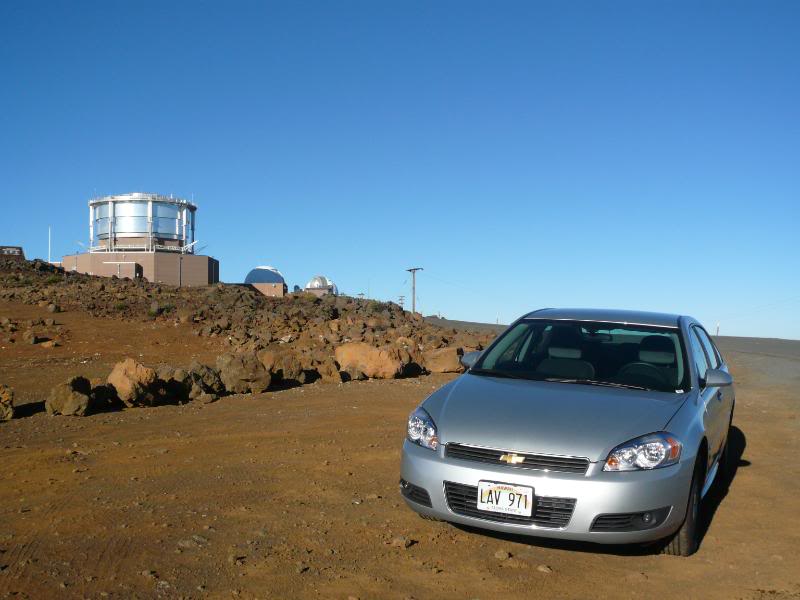
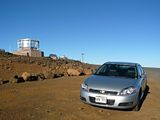
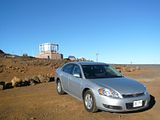
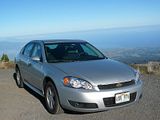
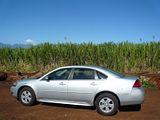
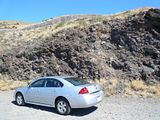
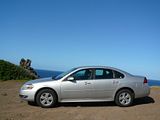

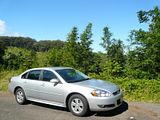
Discounting pickup trucks, for many years the best-selling Chevrolet has been their largest saloon car, the Impala. Doyen of the rental fleet, and also finding favour with a number of the US Police Forces even before all their beloved Crown Victorias are pensioned off, the Impala is a surviving reminder of the sort of car that Americans used to buy by the million. That was before the fashion for Mini Vans, SUVs, Crossovers and whatever other niche vehicle had been invented, let along become popular, of course. The Impala’s role now is to provide honest no-nonsense transport for those who want a roomy car, with a minimum of fuss, or flair. The current model was premiered in 2005, and went on sale as a 2006 Model Year car along with its coupe brother, the Monte Carlo. Both these cars were in fact heavy facelifts of their predecessors, rather than being genuinely all-new. The Monte Carlo had a fairly short life, but the Impala is still around, little changed in the last five years, and rumours are that it has another 3 years to go. That’s a tough task for any car, so the question is not just whether the Impala is competitive in 2010, but can it possibly stay that way for a while yet. Mr Hertz had an almost brand new one waiting for me at Kahului airport in Maui, which gave me the chance to find out.
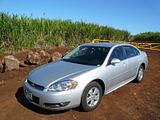
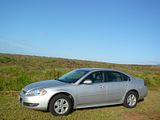
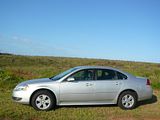

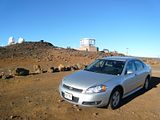





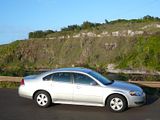
When I saw an Impala, I did rather hope that it was not quite so new and that it was going to be the SS model, which had the 303 bhp 5.3 litre V8 engine under the bonnet, as a few of these had found their way into the rental fleets. But no, it was not, and the fact that the SS has been deleted demonstrates that it was a Q car too far. Three models remain: the LS and LT are both powered by the faithful old V6 3.5 litre GM engine, and in this form it develops 197 bhp; there is also an LTZ model, which has the 3.9 litre V6, putting out 240 bhp, for apparently identical fuel consumption. Given the twisting and winding nature of the roads on Maui, frankly, even the 3.5 litre engine was not going to be able to show much other than effortless cruising at low speeds. In that regard, the Impala does well. It can accelerate to faster than the local speed limits (there are only a couple of places where it is more than 45 mph on the entire island!) with impunity, and it makes little fuss in so doing. Considering the age of the basic engine design, it was more refined than one might reasonably expect. Being a V6, it is smooth, too. There is a 4 speed automatic transmission, and gearchanges are very smooth, so you are barely aware of them taking place. The only manual control is to move the gearlever from D through 3, to 2 or 1. There are no markings at all next to the gearlever itself, but the selected gear is shown in the instrument binnacle. I would have preferred an indication next to the lever as well.
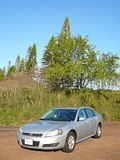
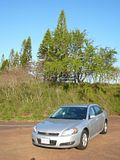


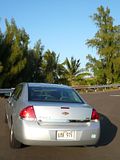

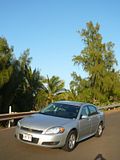
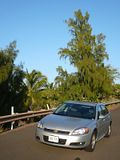
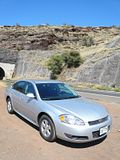
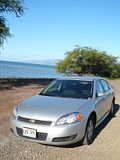
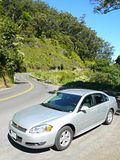
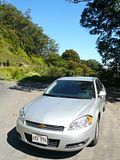
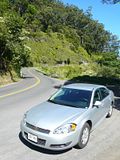
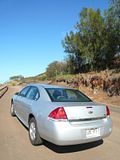






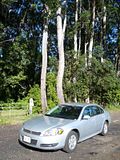
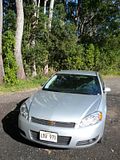


After a few days with the Sienna and its overlight feel-less steering, it was quite a relief to get into a car where the assistance felt about right. For sure this is not sports car and it clearly has not been “Parry-Jones”-ed, but there was a good clue as to what the steered wheels were going to do in response to movements made from the wheel. Handling was less alarming than the Sienna, too. The Impala does understeer a bit, and there is a noticeable amount of body roll, but it is all perfectly manageable, and on the tight corners of the Road to Hana, and the ascent up Mount Haleakala, I would have wanted nothing less. No issues with the brakes, and they also got a good work out on the descent from over 10,000 feet from Mount Haleakala. There is a traditional foot operated parking brake, which is pushed to set and pushed harder to release. The Impala rides quite well, though the roads of Maui are generally in very good shape, many having been recently resurfaced. I achieved 22.3 mpg (US) in the 450 miles of my test experience, which reflects some fairly uneconomical driving such as the long mountain ascent up the former volcano and the stop/start and twists and turns of the Road to Hana, where average speeds are around 20 mph

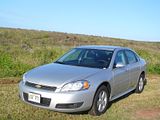
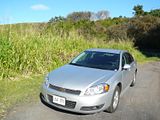
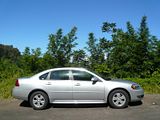
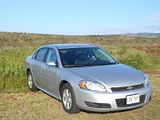
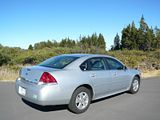
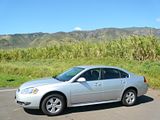
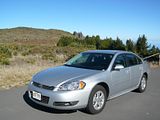
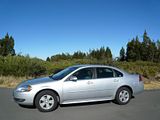
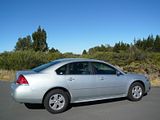
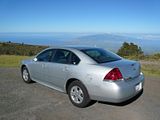

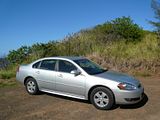
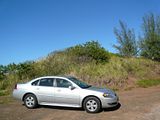
When it was launched, the Impala (and Monte Carlo) marked a welcome and noticeable improvement in interior quality compared to all previous GM offerings. That was five years ago, and standards have continued to improve, but it is far from disgraced (look at any Chrysler Group product) even now. The only legacy of the bad old days is the dreaded awkward single column stalk where you have to twist the end through all the intermittent wiper settings to get to continuous wiping, and there is a fiddly and thin flimsy tab on the top that you pull for the washers. With not a drop of rain during my entire stay, I had no need to use these functions at all. Otherwise, you get a clearly marked set of dials under a single cowl, comprising speedo, rev counter and smaller gauges for fuel level and water temperature. There is a simple trip computer and you can cycle through the displays by pressing the two buttons up on the right hand side of the instrument cowl. The upper one covers trip, average speed and consumption, the lower one does tyre pressures, oil life and the like. The centre of the dash contains the GM CD stereo unit and the controls for the air con. I can confirm that the latter does just as well at warm air as cool, as Mount Halakeala, at 10,023 feet above sea level, before dawn is not a warm place! It was around freezing point, 32 degrees F, and later in the day it was over 80 and I needed the cool setting. Unlike the previous model which had a column mounted shifter, this one has a gearlever in the centre console. Although many of the components are the same as in the Monte Carlo, the overall appearance is different. The coupe model has more of a pseudo sporting appearance, whereas the Impala tries to look luxurious with inserts of polished brown plastic that fool no-one into thinking that they are really wood. There is some redemption for this with the leather covered steering wheel which comes on the LT model, and I rather liked the velour covered seats, as to me they are far nicer than the sort of horrid cheap recycled stockings type of material that you find in most European cars that lack leather seats. In the Impala, the LTZ has leather seats as you might expect.
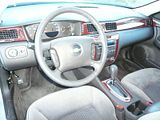
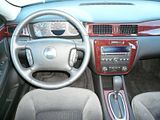


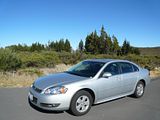


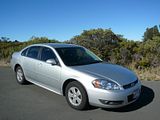

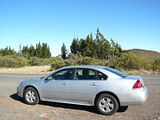
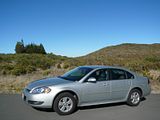
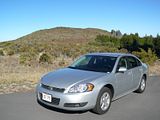
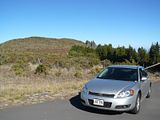
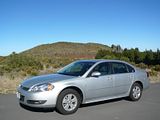
Sedans such as the Impala are still sought after for their roominess, and in this respect, it will not disappoint. There is ample space in the rear for three large passengers, who are supplied with generous amounts of both leg and head room. There is a truly commodious boot, which is so long from front to back that when small items roll forwards toward the rear seat, retrieving them proved to be quite a challenge. On this model, the rear seats are fixed, but optionally (and standard on the LTZ) they can fold forward to create even more length should that be required. Under the boot floor there is just space for the spare wheel and jack. The cabin is reasonably provided with oddment space with a rather small glove box augmented by door pockets, a deep cubby between the seats, two cup holder recesses there and a useful stowage area in front of the gearlever that was perfect for putting my camera.
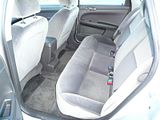
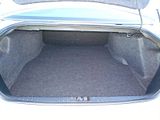
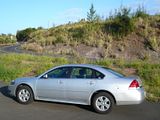
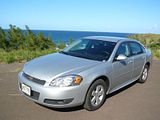
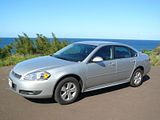
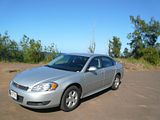
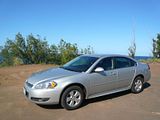
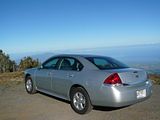
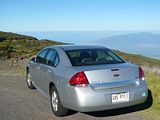
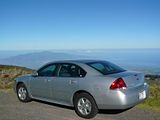
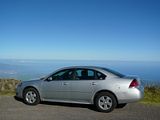
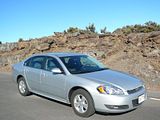
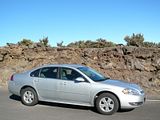
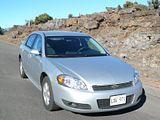
While I was waiting to check the Impala back in at the airport, one of the other staff there asked if everything had been OK with the car. I told him that it had, adding that whilst it was not in any exciting (at this point I was looking at the Corvette ZHZ in front of me!), but it got the job done. For what I needed on Maui, that was probably all I needed. If Hertz still have any of the SS models left, I would happily try one, as I suspect it might just hit the spot for me, preserving the comfort and roominess, but with more than a bit of oomph under the bonnet and the rumble of a V8. Given that this car is now the stated sample car for the “Full Size” category, and all the major rental companies have a lot of them on fleet, the chance of being allocated one again would seem quite high. In the days of the old Taurus (the one that finally disappeared in 2007), it was necessary to guard against ever getting the sample car, but with the Impala LT, then I would not feel the need to change the allocation in the same way. That is certainly progress. Rental Car companies now rate cars like the new Mazda 6, the Nissan Altima and the 2011 Hyundai Sonata in the same category as the Impala, and I have yet to sample any of these. I suspect each has their virtues over and above the long-serving Impala, but they have their challenges, too. That means that the answer to the question posed at the start of this report is that the Impala does what it “says on the tin”, with no fuss, but no significant weaknesses. At just under $26,000 it is a lot of car for the money. Dull, perhaps, but perfectly fit for purpose.

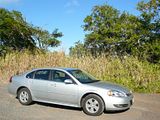
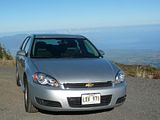
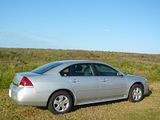
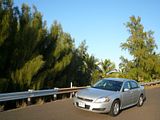
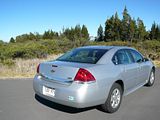



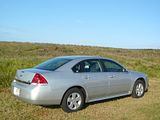
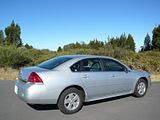

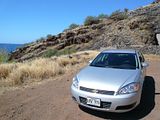

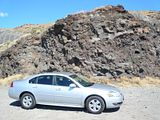
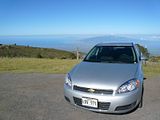
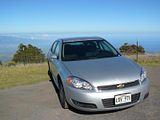

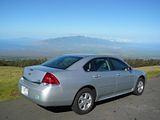
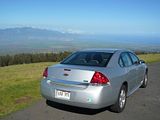

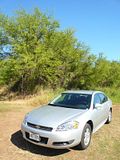
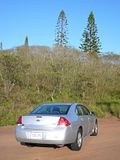
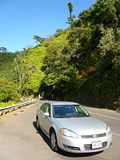

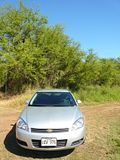
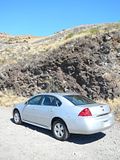
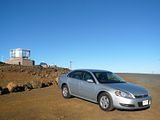
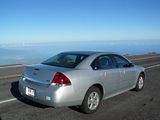
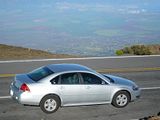
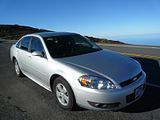
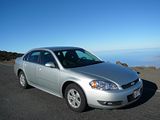
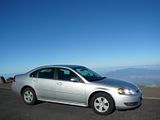
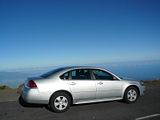


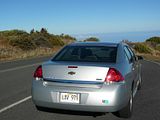
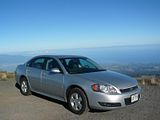
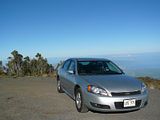
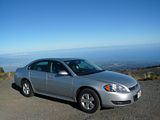

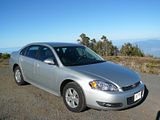

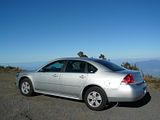
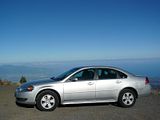
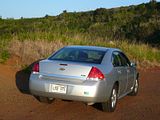


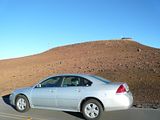
2010-02-15 20:08:51







































































































































